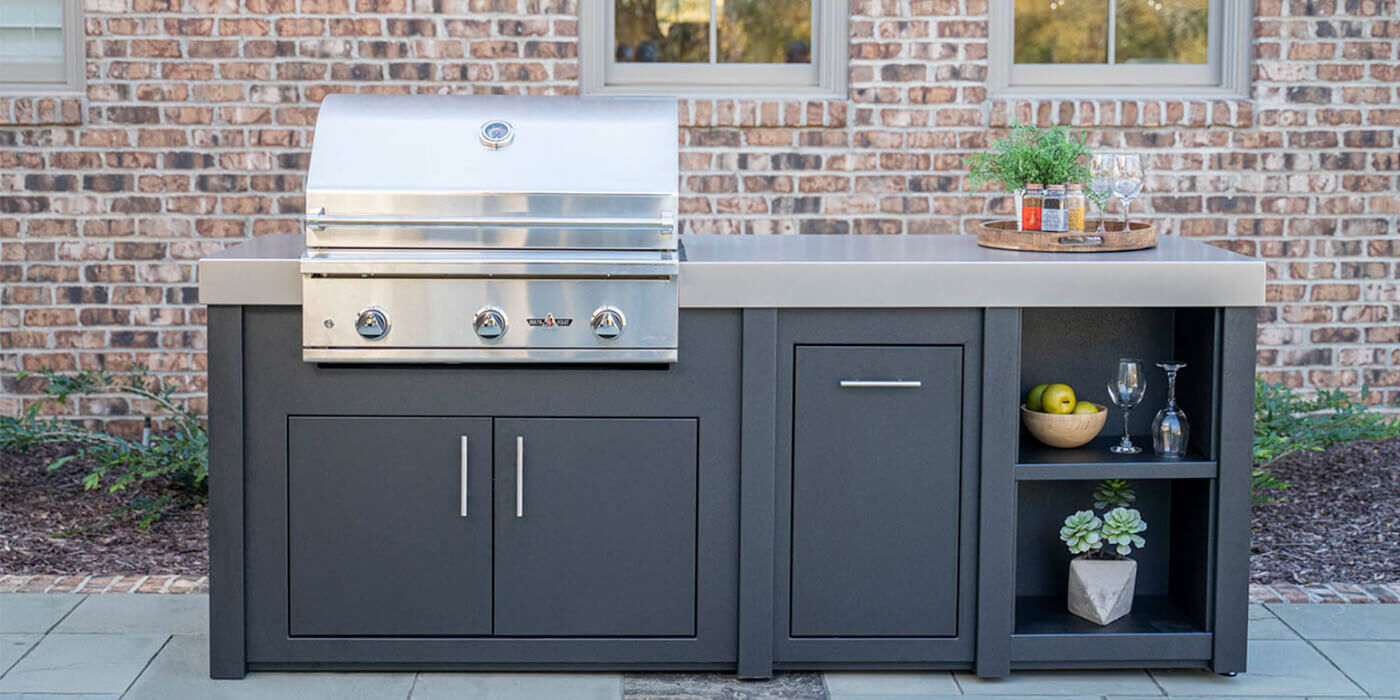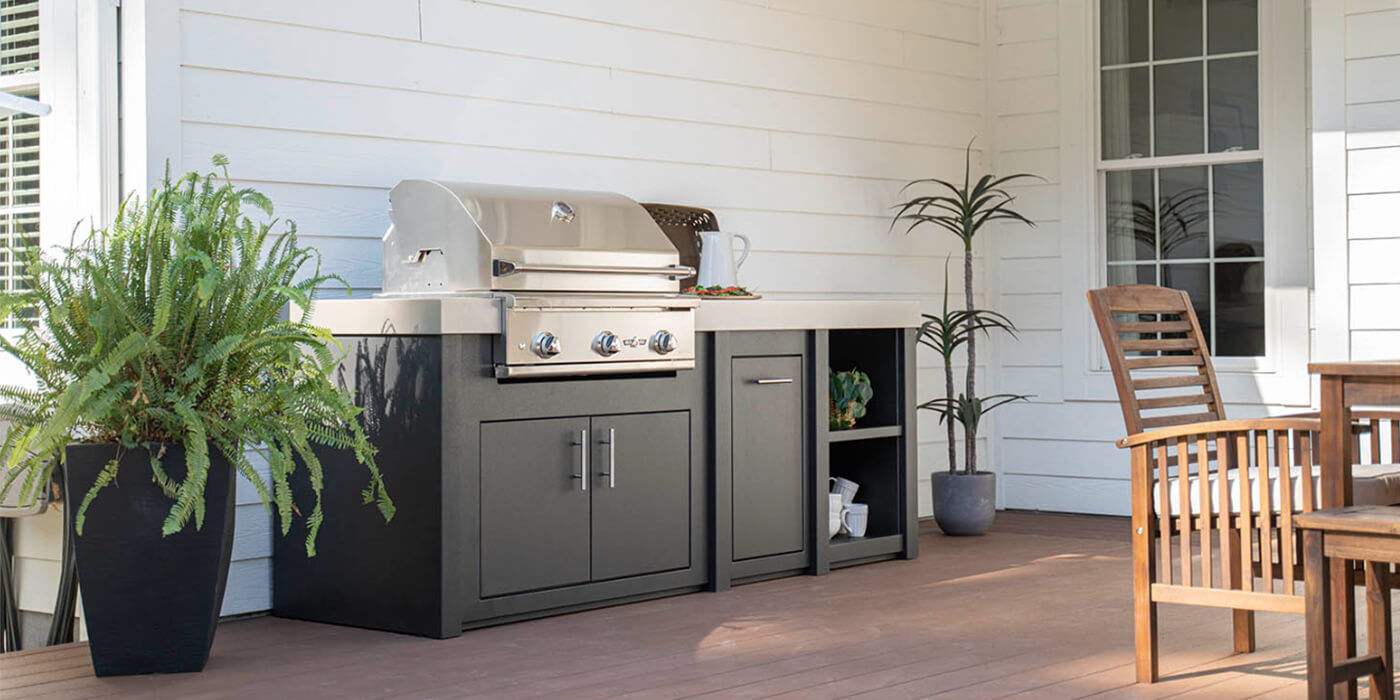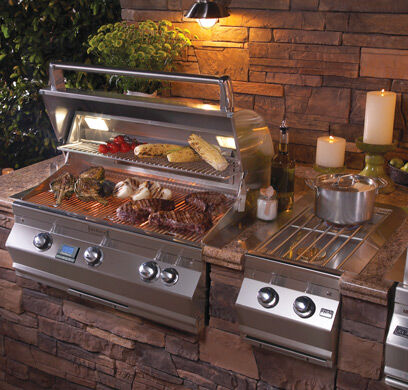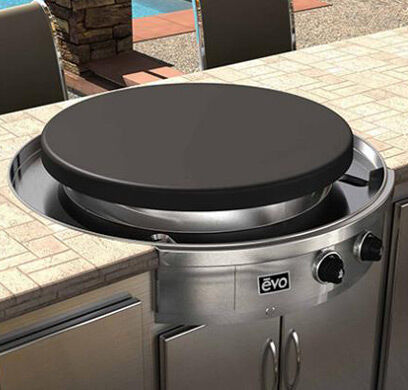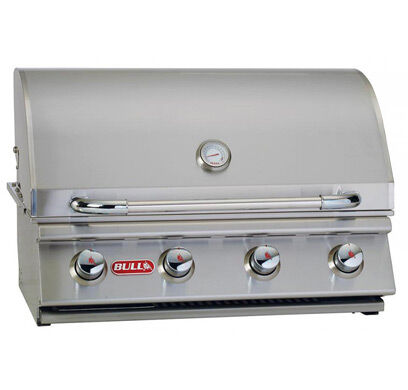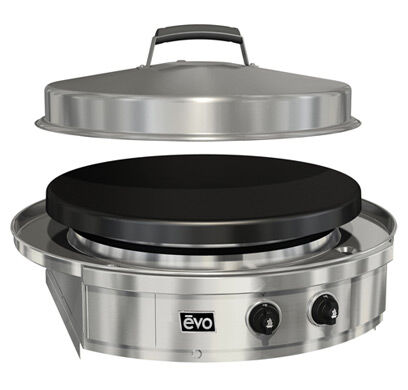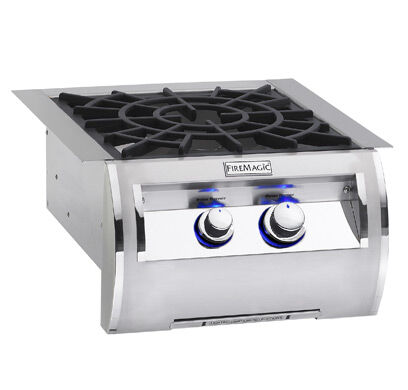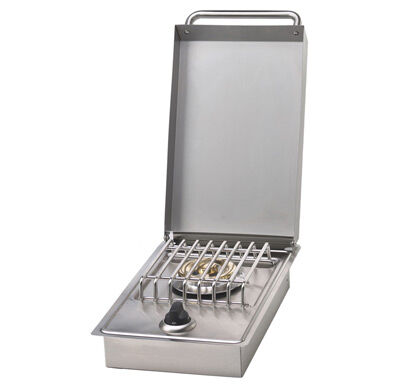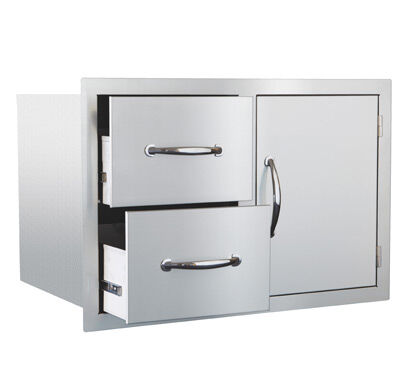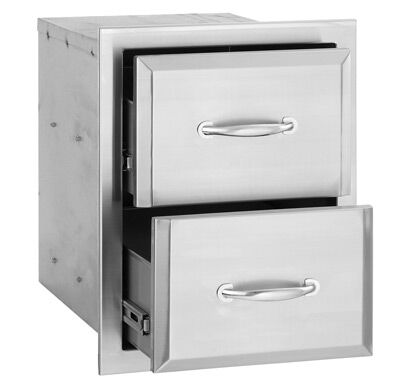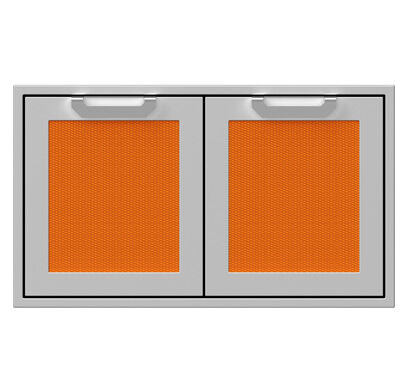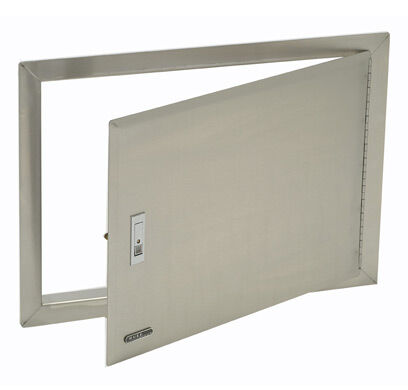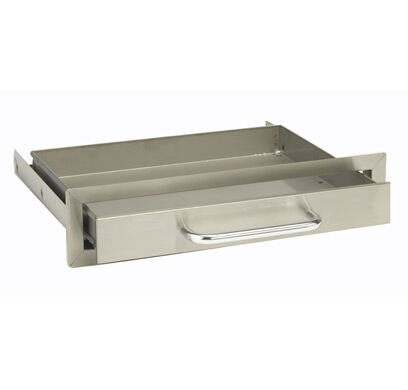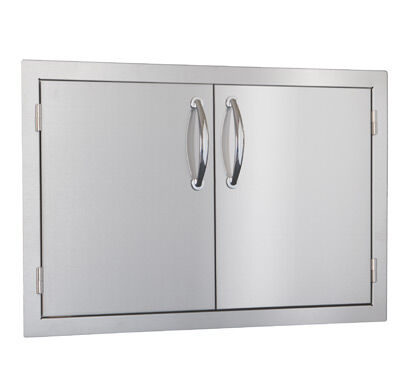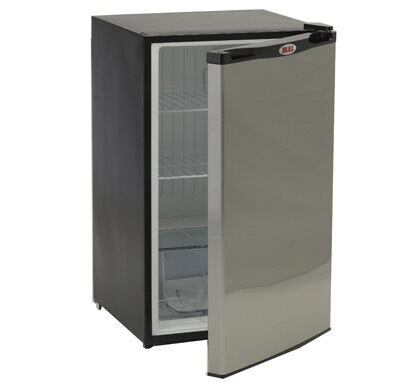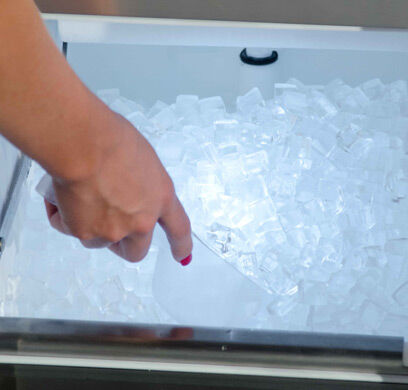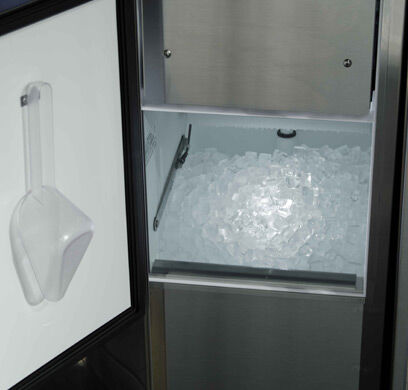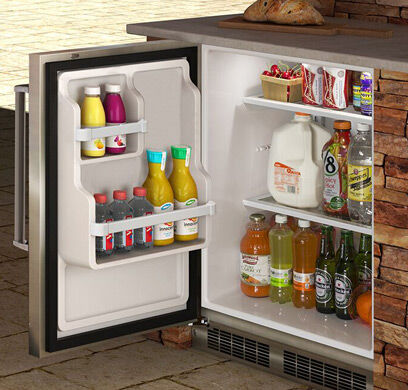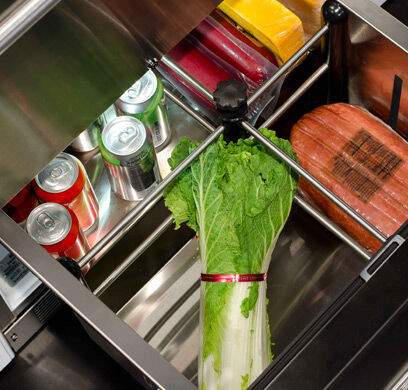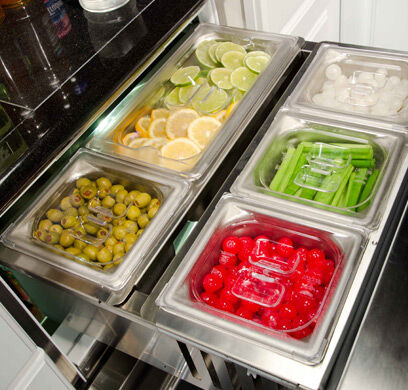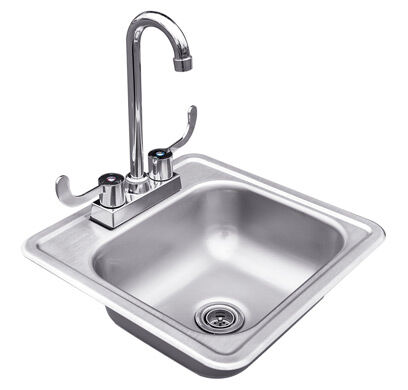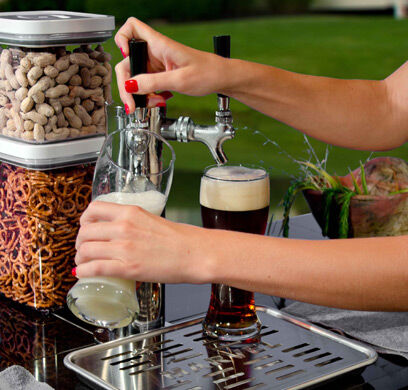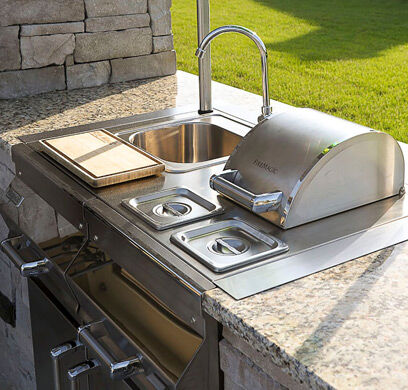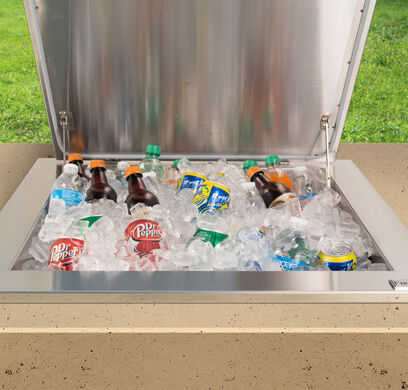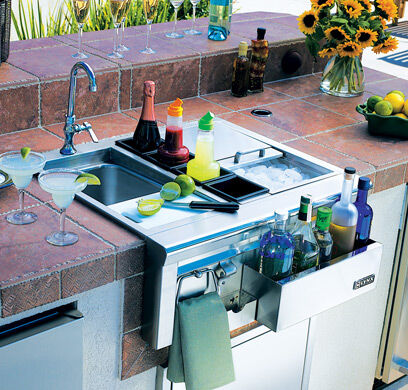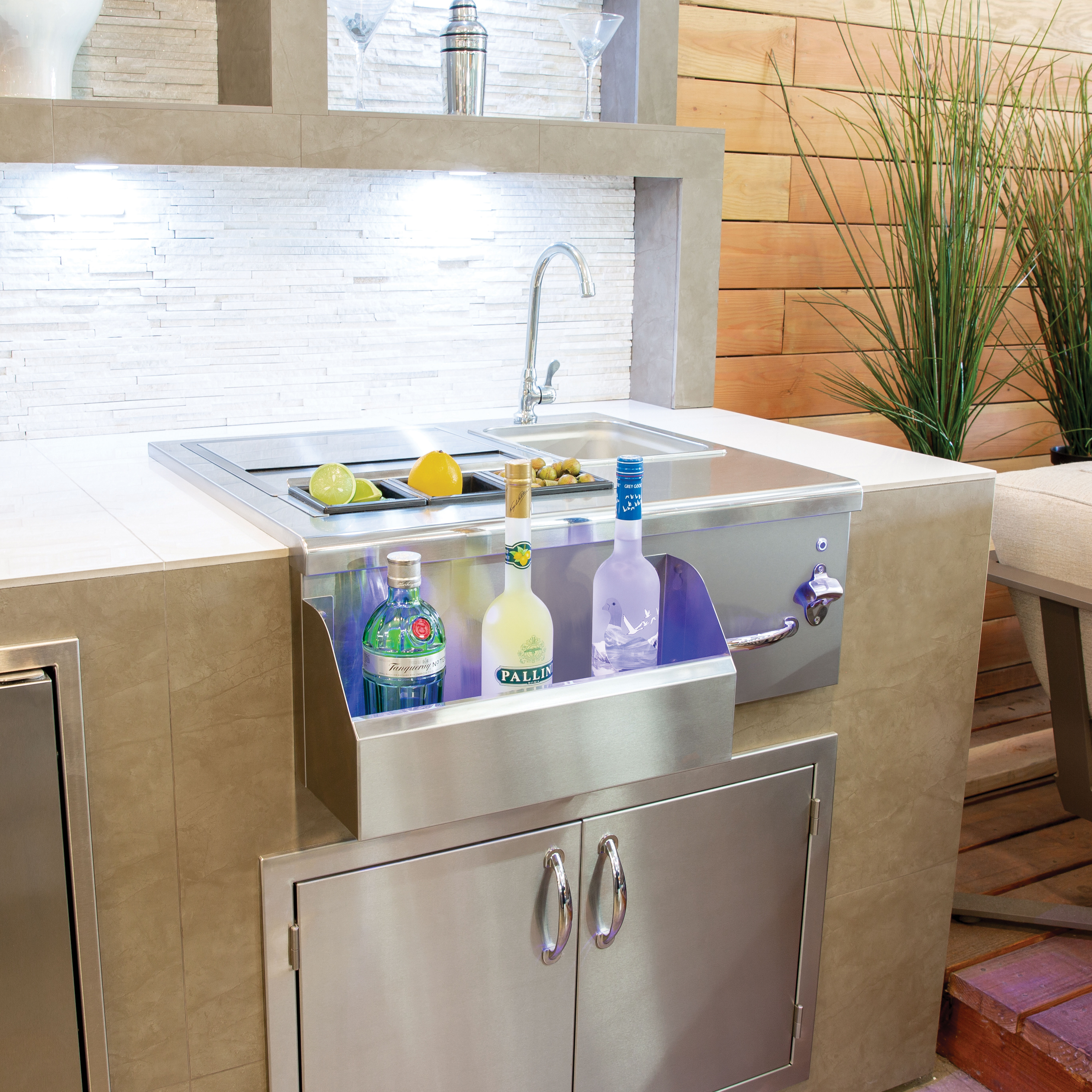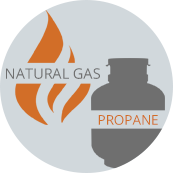By: Jeff O'Keefe, NFI Certified Master Hearth Professional
Last Updated: June 18, 2025
A Ready-to-Finish (RTF) outdoor kitchen is a versatile and cost-effective way to create a custom outdoor cooking space that matches your style and outdoor lifestyle. These units typically feature heavy-duty steel framing and are wrapped in cement board, ready for you to apply the weather-resistant finish and countertop of your choice.
Whether you’re building a simple straight BBQ island or a fully customized L-shaped outdoor kitchen island, RTF kits offer unmatched customization options and flexibility.
If you’re a homeowner planning a DIY outdoor kitchen project, this guide walks you through everything you need to know — from planning and layout to utilities and finishes.
1 | Advantages of an RTF Outdoor Kitchen

Simplified Installation
Unlike a custom-built grill island, an RTF modular outdoor kitchen simplifies the process with pre-framed components. It’s ideal for DIYers who want professional-level results.
2 | Choosing a Layout
RTF outdoor kitchen kits can be customized in almost any shape and size to fit your outdoor living area. When choosing a layout, consider:
- Space: Measure your patio or deck to determine how much room you have for a grill island, countertops, and appliances.
- Functionality: How will you use the space? Entertaining large groups, family dinners, or quick weeknight grilling?
- Zones: Plan for dedicated areas for cooking, prep, refrigeration, and storage.
Popular configurations include straight runs, L-shaped designs, and U-shaped outdoor kitchen islands.
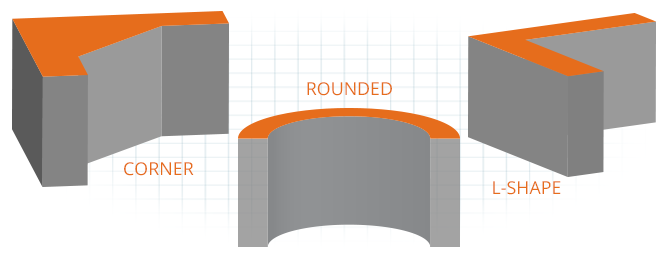
3 | Creating “Zones”
Cooking
This is the heart of your outdoor kitchen design. It should include a built-in gas grill, but it could also feature:
- Side burners: Prepare sauces and sides.
- Griddles: Make breakfast or hibachi-style dishes.
- Pizza ovens: Choose from gas or wood-fire pizza ovens for your preferred flavor.
- Warming drawers: Keep your food at the right temperature.
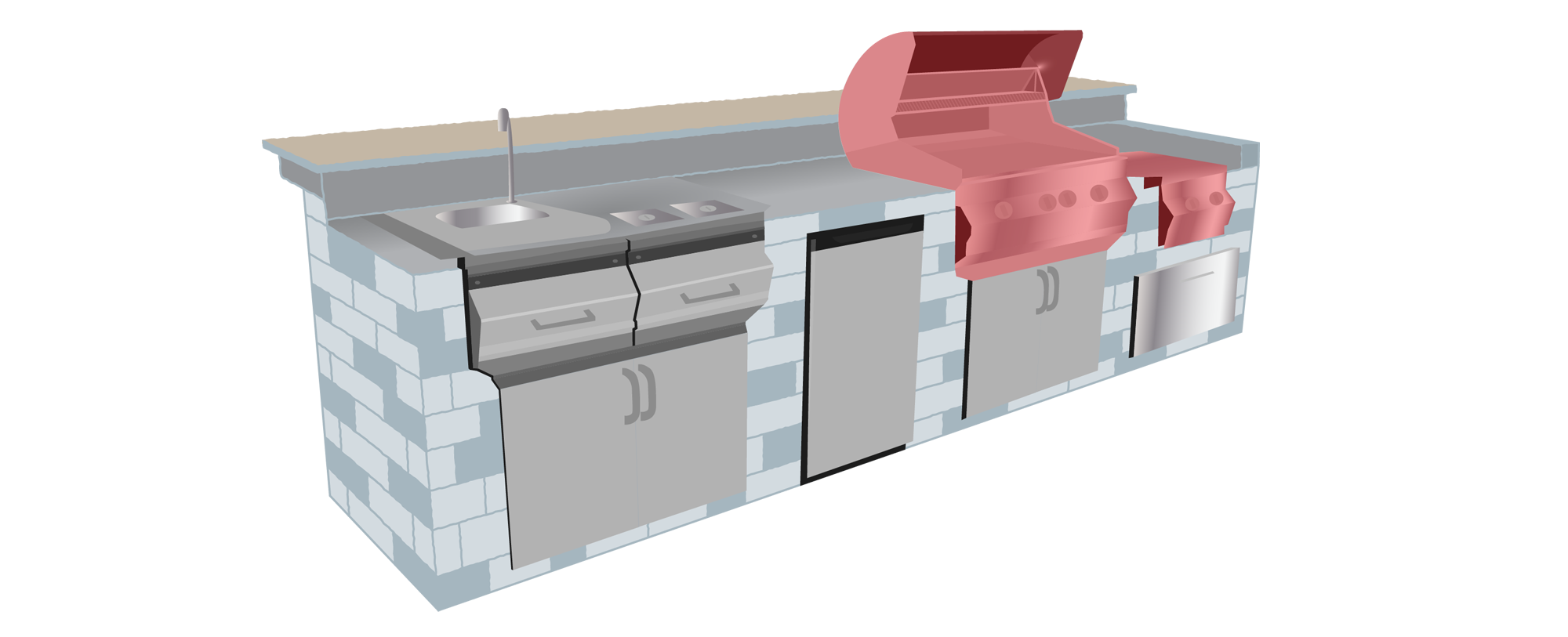
Storage & Prep
Add efficiency with extra storage, like outdoor kitchen cabinets, access doors, pull-out drawers, and cutting surfaces to keep tools and ingredients within reach.
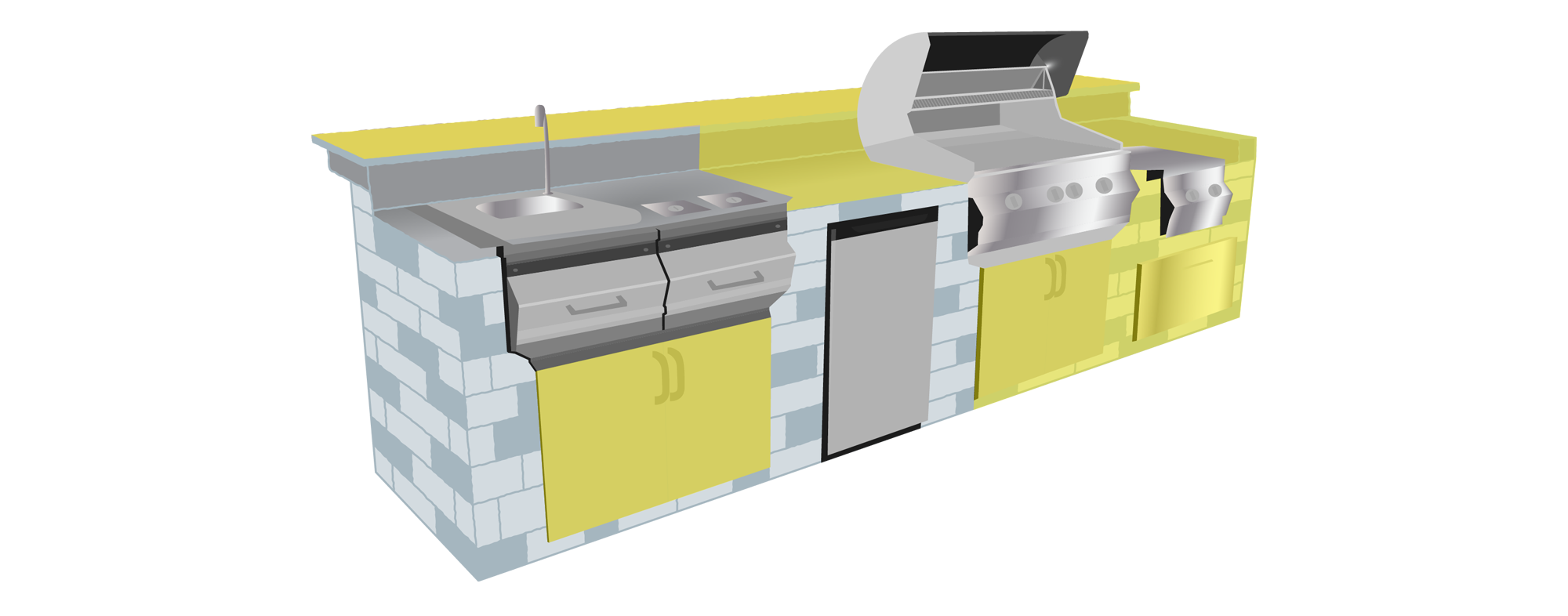
Refrigeration
Keep beverages and ingredients cold with outdoor-rated refrigerators, ice makers, or refrigerated drawers.
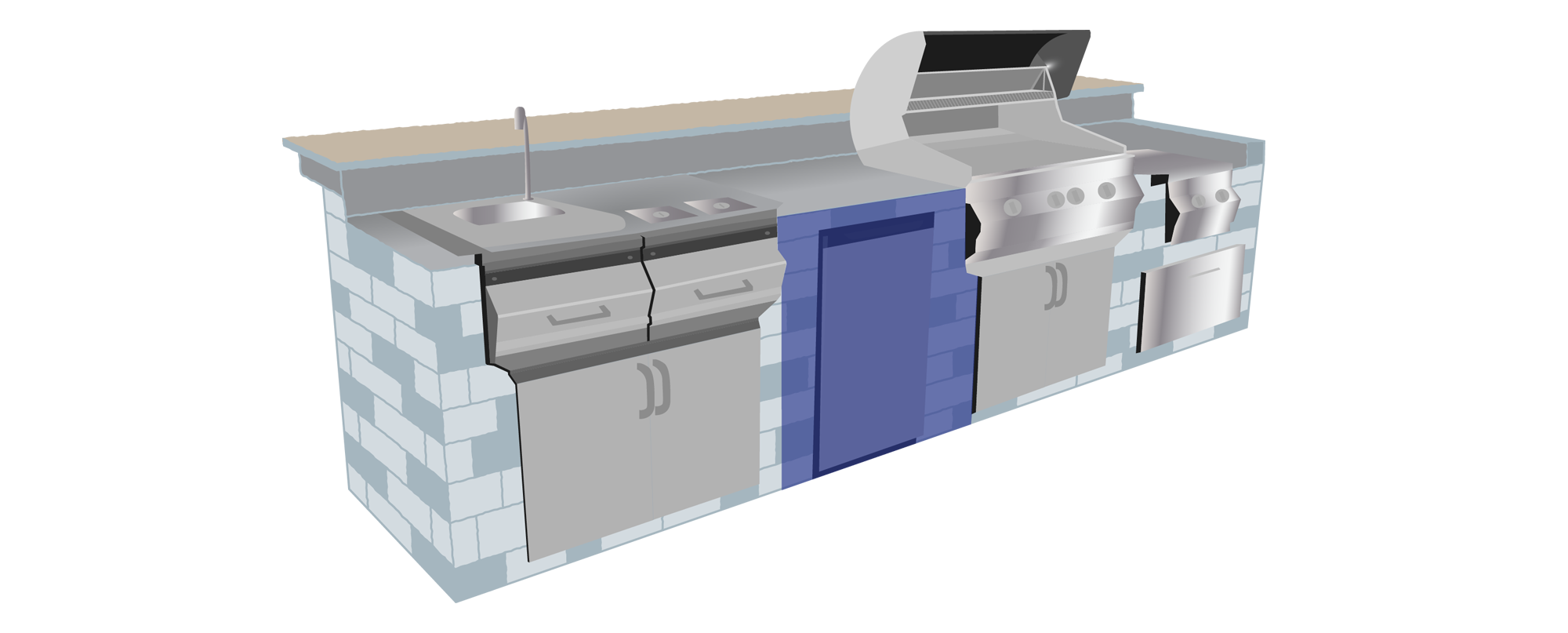
Water & Beverage
A faucet and sink or full beverage center make food prep and clean-up easier. It’s ideal for making cocktails, filling pots, and rinsing fresh produce.
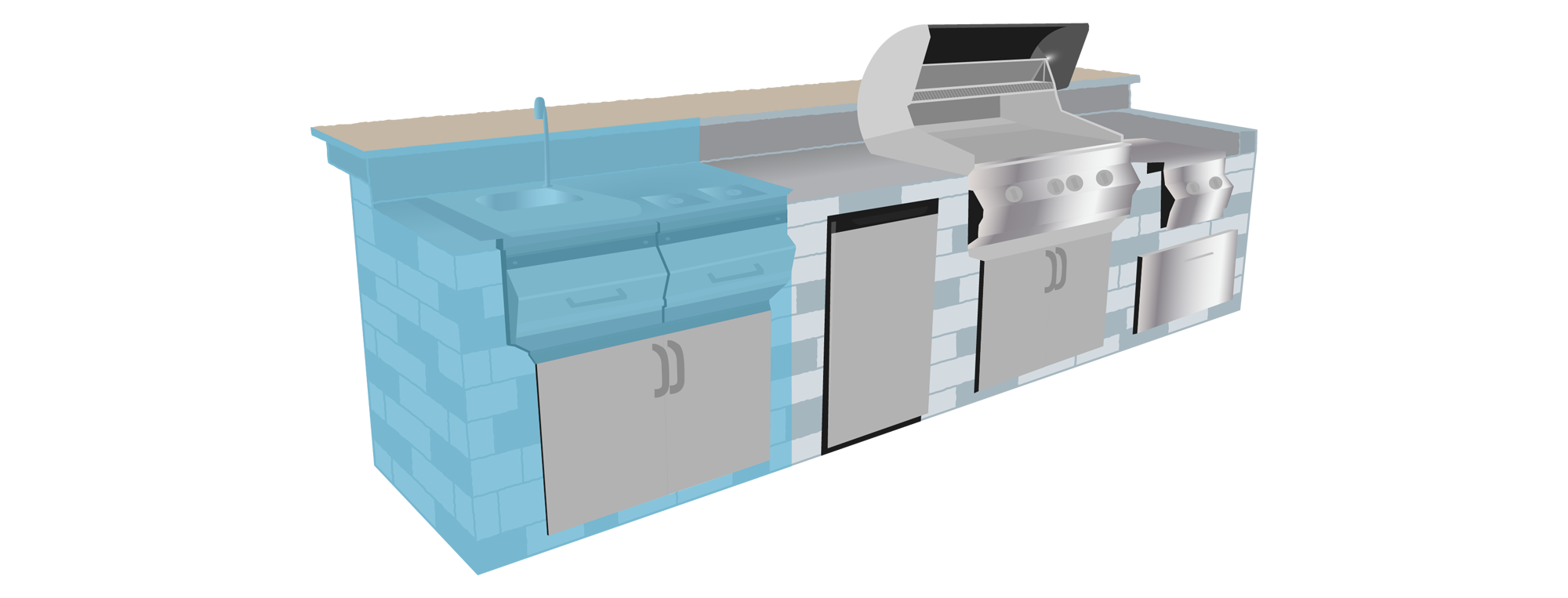
4 | Adding Utilities
Depending on what type of components you select, you will need to have certain utility lines installed in your outdoor space.
Always hire a licensed professional for utility work, especially if it involves gas.
5 | Planning & Construction Tips
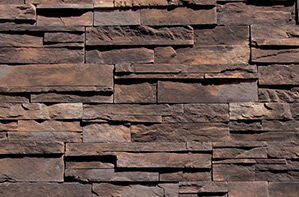
Choosing Finishing Materials
RTF frames must be finished with non-combustible, outdoor-rated materials.
Some of the best options include:
- Stucco
- Stacked stone veneer
- Tile or granite countertops
- GFRC (Glass Fiber Reinforced Concrete)
Choose materials that complement your existing outdoor space and can handle exposure to the elements.
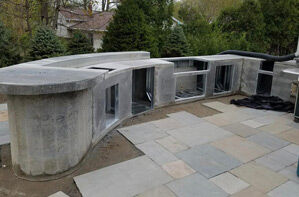
Create a Solid Foundation
Install your RTF outdoor kitchen island on a level concrete pad for stability and support.
For wood decks, consult a structural engineer to confirm it can support the weight of your kitchen, especially with granite countertops, stainless steel appliances, and stone finishes.
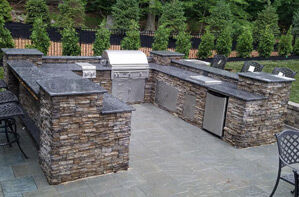
Choose a Safe Location
If possible, install your outdoor kitchen close to your indoor kitchen for easier access.
If you’re placing it under a roof or overhang, add a vent hood to safely redirect smoke from your gas grill.
Outdoor Planning Tips from the Pros
FAQs
In some areas, a permit is required, especially if you’re installing gas lines, plumbing, or electrical components. Check with your local building department before starting your project.
Cutouts refer to pre-measured openings in the kitchen island or cabinetry for installing appliances like built-in grills, refrigerators, or sinks. Accurate measurements are crucial to ensure a perfect fit and safe operation.
Both fuel types provide the same flavor payoff, so the decision comes down to lifestyle.
By hooking your grill up to a permanent gas line, you’ll have a constant flow of fuel, cleaner burning, and a lower cost per use compared to Propane. However, using a Propane tank makes your grill portable.
We're Here to Help
Ready to get started on your RTF outdoor kitchen? Reach out to our NFI certified experts at 800.919.1904 and we’ll help you find the perfect design.
More Resources
Find out if a Ready-to-Finish or DIY outdoor kitchen is right for you.
Building an outdoor kitchen? Read the top 6 things you need to consider before getting started.
Learn more about outdoor kitchens in our Outdoor Kitchen Buying Guide.
 |
Jeff O'Keefe is a skilled Technical Sales Representative with a decade of experience at Woodland Direct. As an NFI-Certified Master Hearth Professional, Jeff has helped clients complete a variety of projects, from selecting a fire pit to customizing an indoor fireplace. When he's not working, Jeff escapes to The Great Outdoors. He enjoys exploring new hiking trails, fishing, hunting, and dirt biking. His love for adventure and the outdoors is reflected in his passion for creating warm, inviting spaces that bring people together. Call Jeff or one of our experts in fire at 800.919.1904. |
